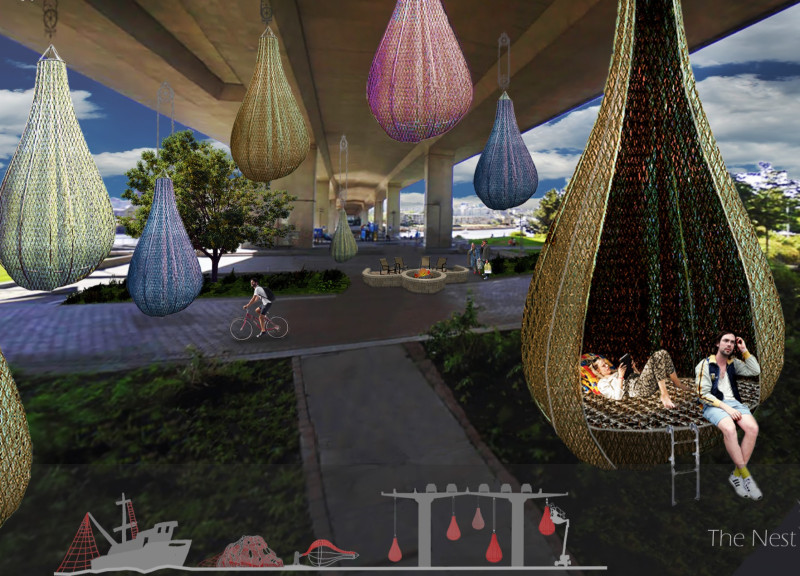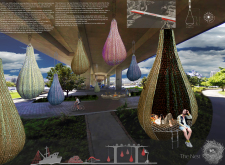5 key facts about this project
“The Nest” is an architectural project situated beneath the Cambie Bridge in Vancouver, British Columbia. The installation is designed as a response to the pressing issue of homelessness in urban areas. It serves both as a shelter and a communal space, enhancing social interactions among individuals experiencing housing instability. This architectural solution addresses immediate needs while also fostering a sense of community and belonging.
The project’s design incorporates several key elements that work in tandem to create functional spaces. Central to the structure is a compression ring, which provides essential support for a series of hanging pods. These pods, crafted from recycled board straps, are shaped to evoke natural forms, providing spaces for privacy, relaxation, and social interaction. The unique teardrop shape of the pods optimizes comfort while maintaining structural integrity, aligning functionality with an inviting aesthetic.
Sustainability is a core tenet of “The Nest.” The use of recycled materials, such as the board straps and durable concrete for the base, minimizes the environmental impact of the installation. The integration of natural light enhances the user experience within the structures, making them not only environmentally friendly but also pleasant spaces.
Architectural Process and Community Focus
A notable aspect of this project is its dual focus on adaptability and community engagement. The design features a flexible arrangement that allows the pods to be configured in various ways to accommodate individual needs, whether for solitary use or group gatherings. By creating dedicated areas for social interaction, “The Nest” aims to promote communal support systems, which are crucial for individuals facing homelessness.
The architectural design incorporates a sturdy steel frame that supports the pods while featuring a pulley system for easy accessibility. This approach enhances safety and ensures that the installation can adapt to different user needs over time. The space beneath the Cambie Bridge is revitalized through this design, transforming an underutilized area into a vital community resource.
Overall, “The Nest” exemplifies how architecture can address social issues through thoughtful design. The integration of innovative materials and a focus on user experience distinguishes this project from typical responses to homelessness. The combination of structure, comfort, and community engagement within a sustainable framework positions “The Nest” as a significant architectural response to urban challenges.
For a more in-depth understanding of this architectural endeavor, explore the project presentation, including architectural plans, sections, and designs that further illustrate the innovative ideas behind “The Nest.”























